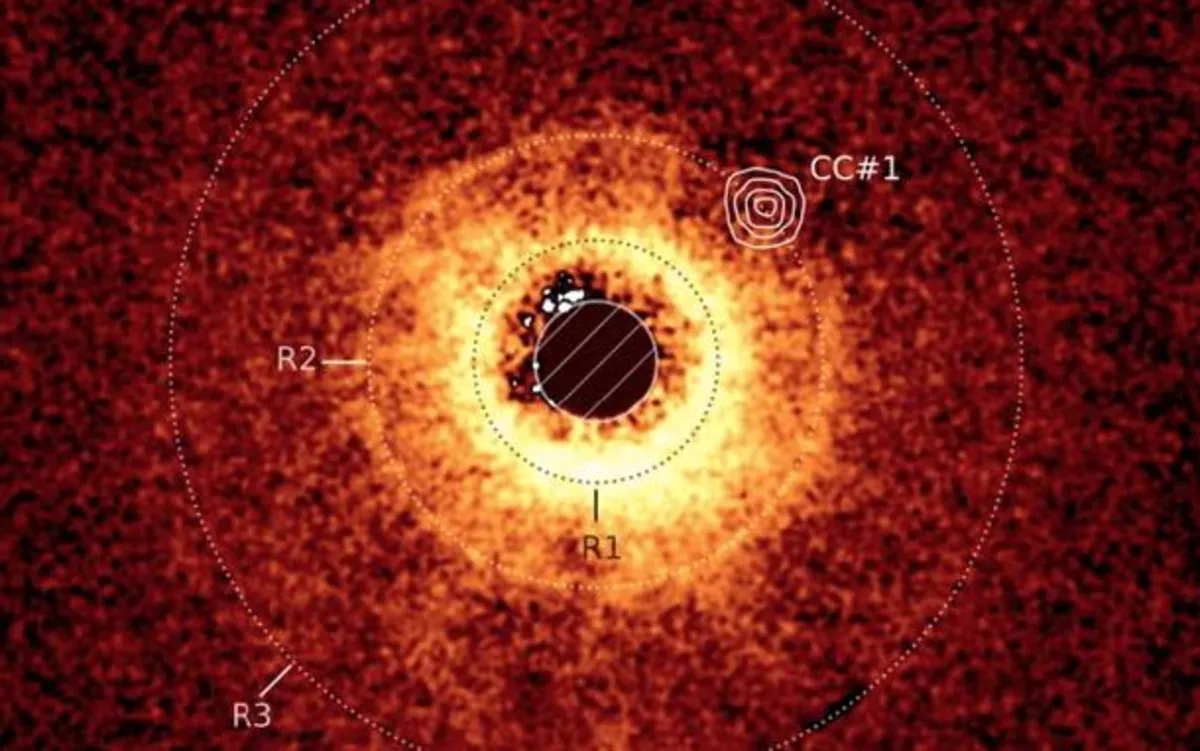
NASA’s James Webb Space Telescope has achieved a groundbreaking milestone by capturing direct images of an exoplanet outside of our solar system for the very first time. This remarkable feat is significant because exoplanets typically emit very little light, making their detection challenging. Researchers often rely on indirect methods, like observing the shadows cast by these planets as they transit across their host stars. However, the James Webb Space Telescope has bypassed these conventional methods and successfully imaged a planet known as TWA 7 b.
Located approximately 100 light-years from Earth, TWA 7 b is estimated to have a mass comparable to that of Saturn. One of the fascinating aspects of this planetary body is its considerable distance from its star, resulting in an extended orbital period that spans several hundred years. The planetary system to which TWA 7 b belongs is believed to be around 6 million years old, providing scientists with a unique opportunity to observe the early stages of its development. In contrast, our own Sun is considered middle-aged, at around 4.6 billion years old.
According to reports from The Guardian, TWA 7 b is notably ten times smaller than any previously observed exoplanet using direct imaging techniques. Generally, planets of this size remain undetectable because the light emitted by their host stars obscures direct observation. To overcome this challenge, the research team, led by Dr. Anne-Marie Lagrange, developed a specialized telescopic attachment that simulated the effects of a solar eclipse. This innovative approach significantly reduced the light interference from the star, facilitating the observation of surrounding celestial objects.
The result of this meticulous process was the identification of TWA 7 b, which appears as a bright point of light surrounded by a narrow ring of debris. While Dr. Lagrange and her team acknowledge the slight possibility that the images could depict a background galaxy, the evidence overwhelmingly suggests the presence of this previously undiscovered planet.
The discovery of the first exoplanet dates back to 1992, and since then, nearly 6,000 additional exoplanets have been identified. Notably, the vast majority of these celestial bodies have not been detected through direct imaging methods. This latest achievement marks yet another remarkable discovery made by the James Webb Space Telescope. Recently, the telescope also captured a stunning cosmic phenomenon known as an Einstein Ring, which occurs when light from one galaxy is bent around the mass of another. Furthermore, last year, the telescope unveiled the most distant galaxy ever observed, underscoring its pivotal role in advancing our understanding of the universe.
In summary, the James Webb Space Telescope's direct imaging of TWA 7 b not only highlights the capabilities of modern astronomical technology but also opens new avenues for exploring the formation and evolution of planetary systems beyond our own. This achievement is a testament to the innovative spirit of scientists working to unravel the mysteries of the cosmos.